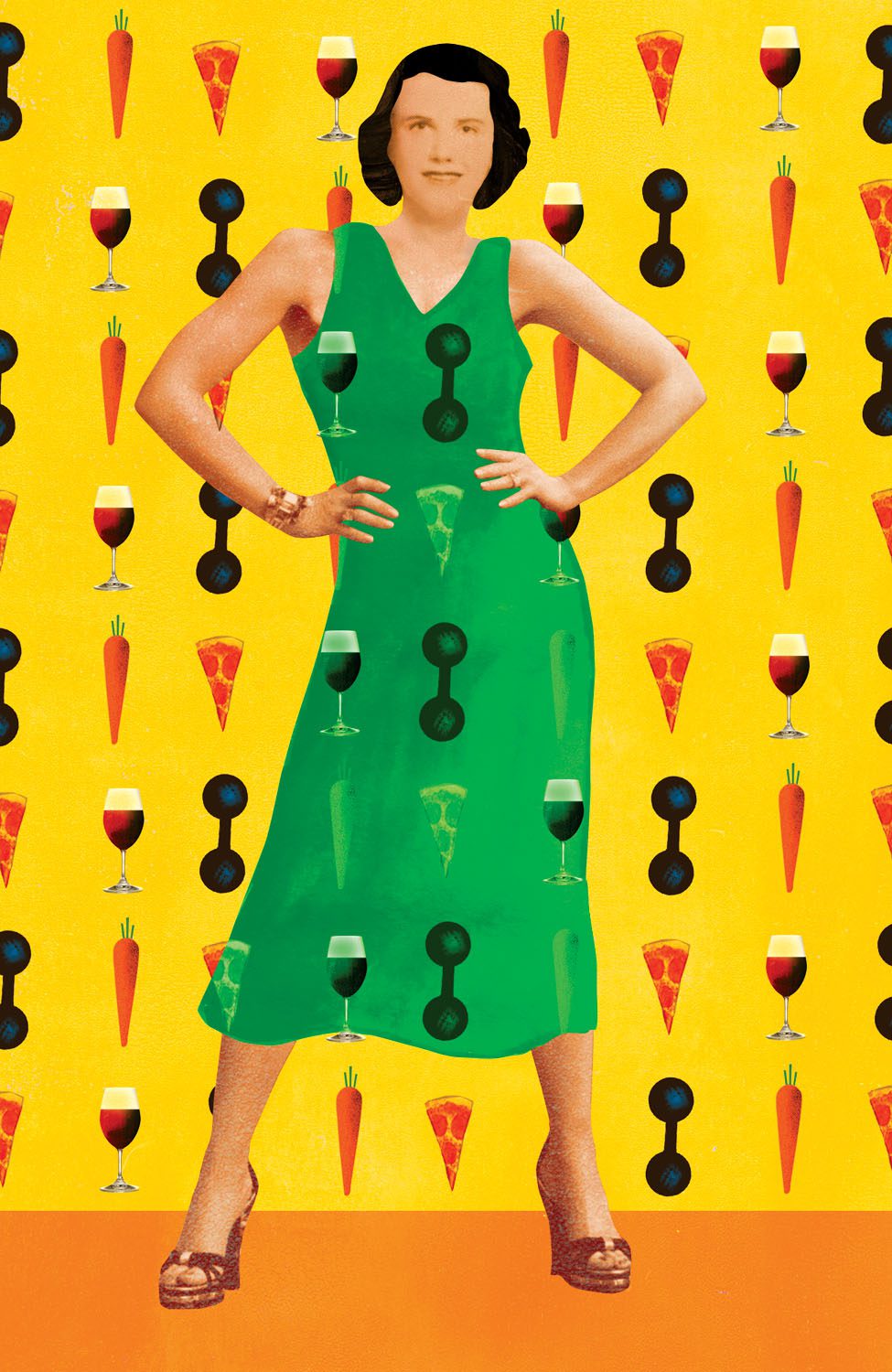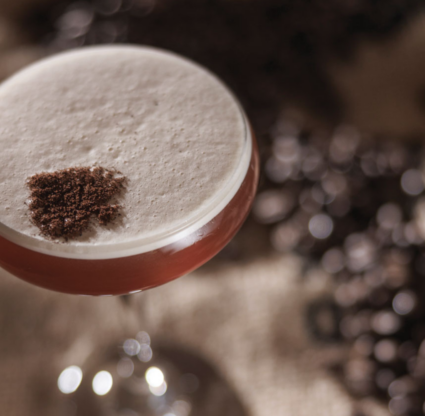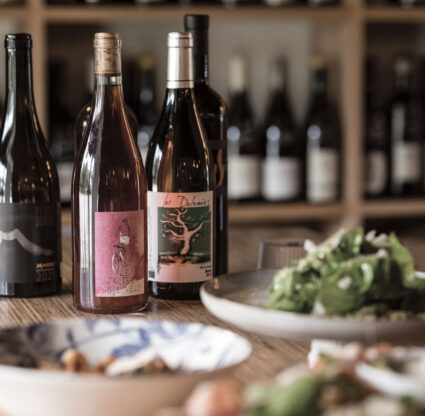It’s season in southwest Florida, and that means coffee dates and cocktail hours, three- and four-course dinners, golf outings (with post-game lunch), get-togethers at the club, the pool, the bar, the theater. Oh, and let’s not forget Super Bowl buffets; county fairs and street festivals (Funnel cake! Meat on a stick!); beach trips with well-stocked coolers; spring training baseball and its smorgasbord of hot dogs, nachos, ice cream, beer.
In short, Southwest Florida’s social season is the holidays—on steroids—straight through until Easter.
The idea of not partaking in the season’s flavors and festivities is, well, sacrilege. But if you don’t want to go back north (or say “goodbye” to northern friends) a pants size bigger, then a little mindfulness is needed.
Local health experts offer tips for balancing the indulgences of the social season while protecting our health.
The first step is coming to terms with what you’re putting in your body. Take a deep breath, friends; this next part isn’t pretty…
Beware the beverages
“Alcohol is the biggie. That’s where they are getting all their calories.”
Audrey McKernan is a registered dietician for NCH Healthcare System, and she is constantly cautioning her patients about liquid calories. With good reason: Many of the region’s retirees start their days with mimosas and keep sipping till nightcaps.
That’s a whole lot of calories (and potentially a whole lot of liver damage, but we’ll save that topic for another day). Consider:
-The average 12-ounce pina colada: 655 calories (and the caloric equivalent of 34 Starburst candies, according to McKernan)
-The average 12-ounce margarita: 750 calories (86 gummy bears)
-Six ounces of Coca-Cola (for mixed drinks): 70 calories, but nearly 20 grams of sugar (that’s 5 teaspoons)
-Ditto for 7-Up
Never mind the mixers. Straight-up alcohol packs a caloric punch all by itself.
“What surprises my patients the most is how many calories per gram alcohol has,” says Dr. Tasha Wallace, a primary care physician whose Wallace Family Practice in Lehigh Acres includes a Medi-Weightloss Clinic.
Alcohol has 7 calories per gram, she says. In contrast, protein has 4. Not to mention the metabolic process between alcohol and protein are vastly different.
“You can really drink a lot of calories if you’re not paying attention,” Wallace says.
To counteract alcohol’s potential punch, Wallace and McKernan suggest:
-Replace regular sodas with diet versions (but know that artificial sweeteners aren’t exactly good for you, either).
-Say “goodbye” to Baileys and other fat-laden cream drinks. Try a rum and diet cola instead.
-Switch from premade mixes to DIY cocktails by blending liquor with fresh-squeezed juice and ice.
-Spritz your wine by adding soda water.
-Go red and enjoy the health benefits of red wine (but don’t negate those benefits by overindulging).
And the biggest thing—know what a serving actually means: 4 ounces of white wine; 5 ounces of red; 12 ounces of beer (hear that, pint drinkers?); 1.5 ounces of liquor.
“If people say they had two glasses of wine, it probably means they had four to six,” McKernan says. Four ounces looks awfully lonely in an oversized goblet. Trick yourself into being content with less by choosing a smaller glass.
Killer coffee
It’s been a long time since coffee shops offered three choices: regular, decaf or flavored. Coffee has morphed into dessert on today’s extensive and decadent drink menus.
“On those specialty coffees, it’s buyer beware,” McKernan says. “We love our pumpkin spice lattes, but they’re a meal’s worth of calories in a single drink.”
To be exact: a 16-ounce pumpkin spice latte made with 2 percent milk at a favorite and ubiquitous coffee chain is 310 calories, 6 grams of fat and 50 grams of carbohydrates—and that’s before whipped cream.
It’s time to re-discover good-old-fashioned drip coffee (5 calories per 16 ounces). Even with cream and sugar, you’re saving hundreds of calories.
Managing meals
“If I see a slice of apple pie that I want, I will probably cut it in half. I don’t deprive myself all the way—and then I go to the gym the next morning.” Fort Myers resident Ellis Hunter II, 54, shed 29 pounds with the help of Wallace’s weight-loss program and is not about to gain it back—regardless of whether he’s at a social event or on the road visiting family.
He’s come up with a number of strategies to keep him on track: checking restaurant menus before he arrives to make sure they have healthy, lower-calorie options; swapping sweets for proteins; forgoing the bread basket; drinking lots of water.
Ellis is right: You don’t have to avoid food in social settings. You just need a strategy for managing the menu. Our experts offer the following:
-Favor protein-based appetizers like hummus or whole-food ones like veggie platters.
-Don’t hover—fill a plate with hors d’oeuvres and move out of arm’s reach of the appetizer table.
-Bring your own healthy dish to share.
-Eat before the party so you don’t arrive hungry and overindulge.
-Order a broth-based soup as a starter.
-Skip the pre-meal bread.
-Ask! Today’s chefs are happy to accommodate dietary needs and special requests, and servers will swap out unhealthy sides (read: French fries) with better choices.
-f dessert tempts, replace starchy carbs like potatoes with double vegetables to accommodate that special treat.
-Eat regularly: Skipping meals will throw your metabolism out of whack and prompt your body to start storing fat.
A word about working out
Yes, it’s important. No, it does not mean you can eat and drink whatever you want.
“It’s a very common misperception that exercise can reverse the damage you’ve done with caloric consumption,” Wallace says. A high-intensity workout might burn 500 to 600 calories.
“That’s one pina colada,” Wallace says.
Ouch.
Nevertheless, sticking with your fitness routines is essential to maintaining a healthy weight, blood pressure, cholesterol, glucose levels and the like—even when your social calendar is full. Imagine what season could do to a waistline if you’re not active.
“Be consistent. Pay attention. Eat consciously,” Wallace summarizes. “And moderation is key.”





